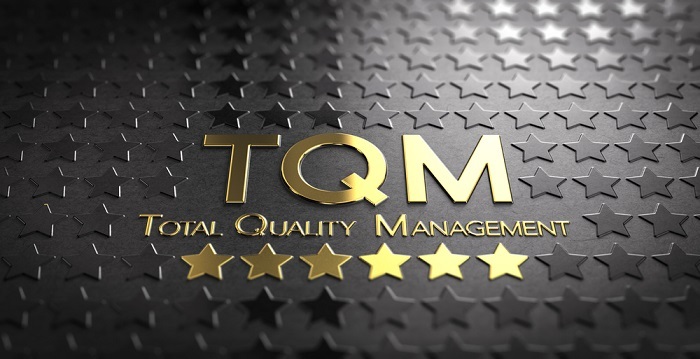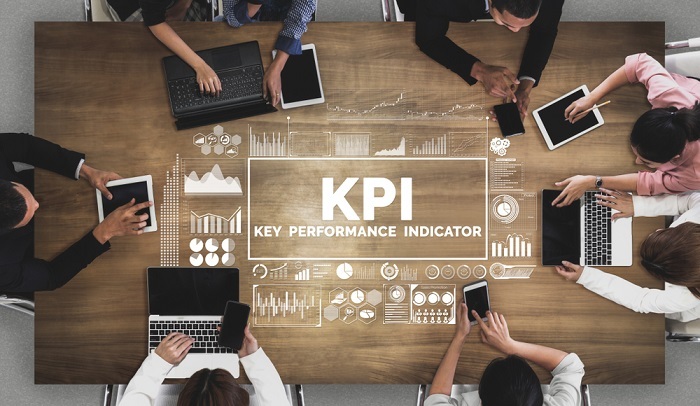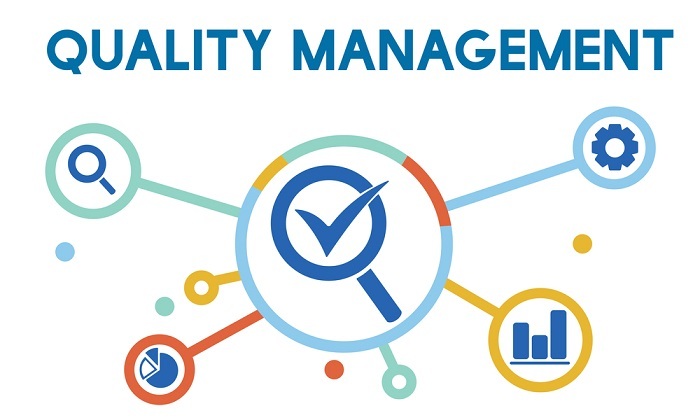
 Data Structure
Data Structure Networking
Networking RDBMS
RDBMS Operating System
Operating System Java
Java MS Excel
MS Excel iOS
iOS HTML
HTML CSS
CSS Android
Android Python
Python C Programming
C Programming C++
C++ C#
C# MongoDB
MongoDB MySQL
MySQL Javascript
Javascript PHP
PHP
- Selected Reading
- UPSC IAS Exams Notes
- Developer's Best Practices
- Questions and Answers
- Effective Resume Writing
- HR Interview Questions
- Computer Glossary
- Who is Who
What is Continuous Improvement in Quality Management?
Continuous quality improvement is a critical process in which businesses strive to improve their products, services, and processes on a continuous basis. This strategy focuses on increasing the company's long-term competitiveness and efficiency, resulting in a 10% increase in profitability on average.

Overcoming these challenges requires employee participation, communication of the benefits of the change, and prioritization of resource allocation. KPIs are critical metrics for determining the effectiveness of Continuous Improvement programs in areas such as process efficiency, customer satisfaction, defect rates, and employee engagement.
As technology advances, future trends and innovations in Continuous Improvement include the use of AI and machine learning algorithms, this article explains Agile methodologies in detail, and increased collaboration and communication within departments and teams.
Introduction to Continuous Improvement in Quality Management
A process in which a company focuses on constantly improving its products, services, and processes is known as continuous quality management improvement. This strategy's main goal is to keep the company competitive and efficient in the long run.
Companies that implement a continuous improvement program see an average 10% increase in profitability, demonstrating the value of a continuous improvement. This is due to the fact that by constantly improving their products and services, they can increase customer satisfaction, reduce costs, and improve efficiency.
Continuous Improvement Methodologies and Techniques (e.g. Kaizen, Lean, Six Sigma)
Quality management relies heavily on Continuous Improvement methodologies and techniques. These methodologies and techniques are used to improve a process, product, or service's overall efficiency and effectiveness. Kaizen, Lean, and Six Sigma are some popular Continuous Improvement methodologies and techniques.
Kaizen is a Japanese term that translates to "constant improvement." This methodology emphasizes small, incremental changes that, over time, lead to significant improvements. Kaizen encourages employees to recognize and solve problems as they arise, which can lead to increased productivity, higher quality, and less waste.
Lean is a methodology for reducing waste and increasing value. Lean's goal is to create a streamlined process that produces high-quality products or services with minimal waste. To track progress and identify areas for improvement, Lean encourages the use of visual management techniques such as Kanban boards.
Six Sigma is a data-driven methodology for reducing defects and improving quality. Six Sigma employs statistical analysis to identify and eliminate process sources of variation. The goal of this methodology is to have 3.4 defects per million opportunities.
Common Challenges Faced in Implementing Continuous Improvement and how to Overcome Them
When implementing Continuous Improvement initiatives, organizations face some common challenges. Here's a quick rundown of some of these obstacles and how to overcome them.
-
Challenge 1: Lack of Employee Engagement
According to statistics, only 29% of employees are fully engaged in their work. Continuous Improvement initiatives are difficult to implement without employee engagement. To address this issue, organizations should involve employees in the process of identifying areas for improvement and soliciting their feedback on how to improve processes. This will boost employee engagement and commitment to the process of improvement.
-
Challenge 2: Resistance to Change
Change can be challenging, and some employees may be resistant to implementing Continuous Improvement initiatives. To overcome this challenge, it is critical to communicate the benefits of the change and to provide employees with training and support during the transition. This will aid in lowering resistance and increasing adoption.
-
Challenge 3: Lack of Resources
Continuous Improvement initiatives necessitate the expenditure of resources such as time, money, and manpower. When attempting to allocate these resources, organizations may encounter difficulties. To overcome this challenge, it is critical to prioritize and allocate resources to the most critical areas for improvement. This will aid in the effective and efficient use of resources.
Tools and technologies that can aid in Continuous Improvement efforts
The PDCA cycle, which stands for Plan, Do, Check, Act, is one such tool. This method assists organizations in identifying problems, developing a plan to address them, putting the plan into action, and evaluating its effectiveness. This cycle is repeated indefinitely to ensure that gains are sustained over time.
Lean Six Sigma is another popular tool that combines two methodologies ? Lean and Six Sigma. Six Sigma focuses on reducing defects and improving quality, whereas Lean focuses on eliminating waste and increasing efficiency. They form a strong foundation for continuous improvement when combined.
Technology can also play an important role in efforts to improve continuously. Data analytics tools, for example, can be used to identify patterns and trends that can assist organizations in making informed decisions about where to focus their improvement efforts. Automation tools can also help to streamline processes and reduce errors.
Key Performance Indicators (KPIs) to measure the effectiveness of Continuous Improvement
Key Performance Indicators (KPIs) are critical metrics used to assess the efficacy of Continuous Improvement in quality management. These KPIs provide valuable information about a Continuous Improvement program's success and progress.

Measures of process efficiency, customer satisfaction, defect rates, and employee engagement are some examples of KPIs used in Continuous Improvement. Organizations can identify areas for improvement and measure the impact of their efforts by tracking these KPIs over time.
A KPI such as customer satisfaction, for example, can be measured using surveys or feedback forms to determine whether customers are satisfied with the quality of products or services provided. Employee engagement is a key performance indicator that can be measured using surveys or other forms of feedback to assess employee motivation, job satisfaction, and overall commitment to Continuous Improvement efforts.
Future trends and innovations in Continuous Improvement in Quality Management
Continuous Improvement is a technique for improving the quality of a product or service over time by making small changes. In recent years, there has been a greater emphasis on improving quality management processes through the use of innovative technologies and practices.

One trend that is expected to shape the future of Continuous Improvement in quality management is the use of Artificial Intelligence (AI) and Machine Learning (ML) algorithms. These technologies can help businesses make more informed decisions about how to improve their processes by identifying patterns and trends in data that humans would find difficult to discern.
Another area of Continuous Improvement innovation is the use of Agile methodologies. These methodologies emphasize adaptability and responsiveness, allowing teams to respond quickly to changing circumstances while also constantly improving their processes.
The trend towards increased collaboration and communication among departments and teams within organizations is expected to continue in the future. This approach can assist in ensuring that everyone is working towards the same goals and can contribute to a more holistic and effective approach to Quality Management Continuous Improvement.

